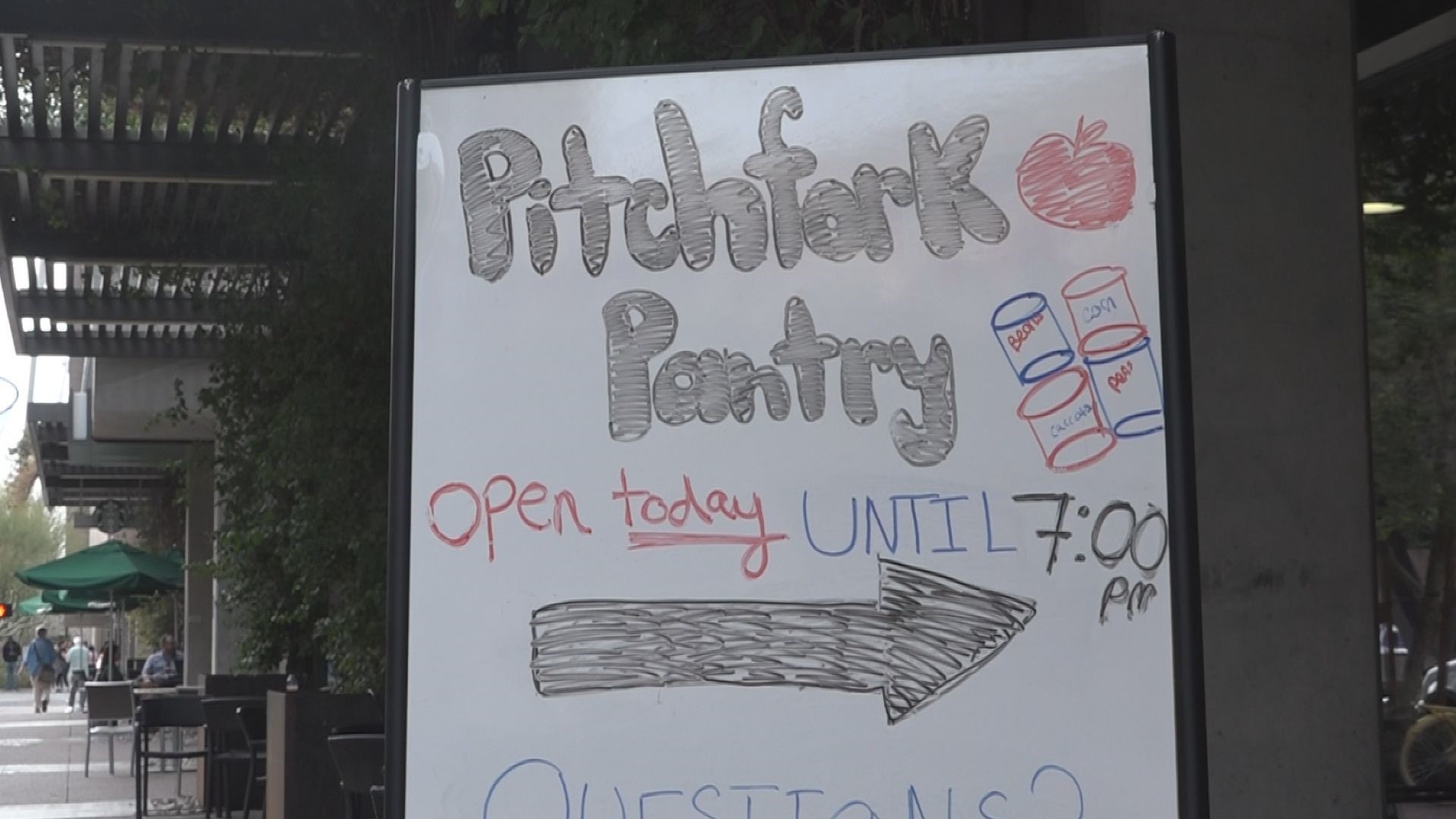PHOENIX — At the end of 2018, the Government Accountability Office (GAO), a nonpartisan congressional watchdog, released a report in which it analyzed 31 studies that focused on food insecurity among college students in the United States.
Twenty-two of the 31 studies found that food insecurity, defined by the USDA “as a lack of consistent access to enough food for an active, healthy lifestyle,” affects 30 percent of students on the college campuses examined.
The problem exists across the country, and students at Arizona State University are not immune. Pitchfork Pantry, a student-run food bank, was formed to directly address this issue within the Sun Devil community.
The GAO report states that one way to address food insecurity on college campuses is for the Food and Nutrition Service to clarify student’s eligibility for programs like the Supplemental Nutrition Assistance Program (SNAP).
The report suggests that SNAP, a federal program that offers nutritional assistance to low-income individuals and families in need, clarify rules for student eligibility. As they stand now, the rules regarding eligibility vary from state to state.
Food insecurity is a college-completion issue, according to the report. It points out that the federal government invests billions of dollars in financial aid every year, and if students don’t have consistent access to nutritional food while they go to school, they are less likely to complete their degrees.
The report states that it is in the government’s interest to make all resources, including SNAP, available to students. Doing so would increase the likelihood of students finishing their degrees. In turn, the government would see a return on its investment.
However, even if the rules are clarified, this doesn’t address the immediate need students are facing. That’s where Pitchfork Pantry comes in. They allow anyone who is an ASU affiliate to access one of the pantry’s two locations, one on ASU’s downtown campus and one on the Tempe campus.
While they serve mostly undergraduates, anyone with a current ASU ID is welcome.
When visiting the pantry, students can take five items at a time: a fruit, a vegetable, a protein and two additional items. The needs of the students who visit the pantry range from doctoral candidates who are waiting for grant money to come through, to students who have run out of financial aid money before the semester’s end, to those who have grown up in environments of systemic food insecurity and may be food insecure before arriving on campus.
The GAO report focuses mostly on low-income students facing food insecurity. However, it notes that an increasing number of middle-class students are facing this problem but are less likely to seek help.
Andrew Vigil-Emerson, a co-executive director of the pantry, says this is reflected in the students he has interacted with on campus. Many think the pantry is necessary but have admitted to him that they would never be able to use it themselves.
Vigil-Emerson says that the biggest issue the organization faces is visibility. At the moment, its marketing is done mostly through the Pantry’s Facebook page, which limits the number of students the pantry could potentially help.
Vigil-Emerson says that the goal of Pitchfork Pantry isn’t to eradicate food insecurity on ASU’s campus. Rather, they are working to identify the different types of food insecurity affecting students and update the food pantry format to better address nutrition and students’ needs without the stigma that is often attached to food insecurity.
For now, the pantry is there to provide a welcoming environment for hungry students and support them as they work towards their degrees. If you could benefit from the pantry or you would like to donate to Pitchfork Pantry you can find the pantry on Facebook by searching @PitchforkPantry1.

